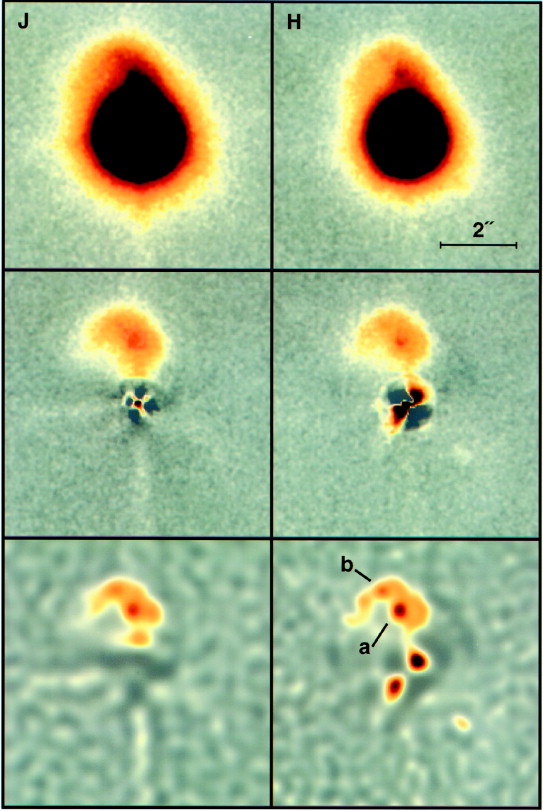Supermassive black holes can produce powerful winds that shape a galaxy and determine their own growth, confirms a group of scientists from Rochester Institute of Technology.
The RIT team has, for the first time, observed the vertical launch of rotating winds from glowing disks of gas, known as accretion disks, surrounding supermassive black holes in the centers of galaxies. The findings are reported in the Nov. 1 issue of Nature.
Gas flowing into a supermassive black hole first accumulates in a rapidly spinning accretion disk, which forms the engine of a quasar, a type of active galactic nucleus found in some galaxies and an extremely powerful source of radiation.
“Gas flowing in from the galaxy ‘fuels’ the quasar,” says Andrew Robinson, associate professor of physics at RIT and an author of the study. “Gas flowing out from the quasar regulates black hole growth and galaxy formation.”

The RIT team, consisting of Stuart Young, David Axon and Robinson, together with colleagues James Hough and James Smith from the University of Hertfordshire in England, studied the winds of gas coming off the quasar PG 1700+518, located in a galaxy at a distance of approximately 3 billion light-years from Earth. Robinson and Smith obtained the data using the William Herschel Telescope on the Canary Islands.
Previous studies have pointed to the critical role winds play in the early or active phase of a galaxy, when a growing supermassive black hole draws in gas from the surrounding cloud and shines luminously—brighter than all of the stars in a galaxy.
“It has long been thought that such winds are launched from the accretion disk but, until now, this idea has been based on purely theoretical arguments,” says David Axon, professor and head of the physics department at RIT.
The RIT team’s study of PG 1700+518 shows that gas is both moving vertically away from the disk and also rotating at a speed similar to the disk’s rotation speed—direct observational confirmation that the disk is launching a wind. The study also helps to resolve the long-standing mystery of how the accretion disk rids itself of angular momentum—a property associated with rotational motion that inhibits the inward flow of gas towards the central black hole just as it keeps the Earth in orbit around the sun.
“If it wasn’t removed, angular momentum would actually completely stop the accretion and turn off the quasar,” says Young, a post-doctoral fellow at RIT, formerly of the University of Hertfordshire, and the lead author of the paper “The Rotating Wind of the Quasar PG 1700+518.” “Our work suggests that the disk removes some of its excess angular momentum by launching a wind, so allowing accretion to happen in the first place to produce the quasar and allow the black hole to grow.”
Quasar accretion disks are too small to be imaged directly. The RIT team confirmed theories about quasar winds by using polarimetry, a technique that measures the polarization of the light from the quasar, a property that can arise when light, or electromagnetic radiation, is scattered or reflected. This technique gives scientists ways to analyze astronomical sources from different perspectives.
“We can’t actually see the accretion disk,” adds Robinson. “We can see its radiation, but we can’t actually see its structure. In a picture, a quasar looks just like a star, so it’s proven very difficult to confirm these theories by observation.”
He continues: “In quasars, like PG1700+518, we believe that light emitted by the accretion disk becomes polarized because it is scattered by electrons in the wind; the process is similar to scattering of sunlight by molecules in Earth’s atmosphere, which makes the sky appear blue.”
Analyzing changes in the polarization of the light with wavelength, or the property that determines color, can reveal information about the internal structure of a source and the motions of the emitting and scattering gas.
During the last 20 years, studying the polarized light from active galactic nuclei has allowed scientists to make sense of a confusing variety of different types of active galaxy.
“When you look at an active galactic nucleus from above you see one kind of active galaxy,” Robinson says. “When you look at it from the side you see another kind. Polarimetry makes clear that they are the same. Scientists used to think there were different types of active galaxies. Now we know they are only different because we are looking at them from different angles.”
During the next phase of their research, the RIT scientists will analyze the polarization properties of scattered light from many more objects to learn if powerful disk winds are launched only in a relatively short-lived phase, when the black hole is growing rapidly, or if they are launched only by quasars, which have the most massive black holes, or by all active galactic nuclei.
“The polarization process makes this very interesting because you get this discrimination between angles, and you get different viewpoints,” Robinson says. “And so the observed properties of the nucleus depend on angle, whether or not the direct view is obscured.”





Comments